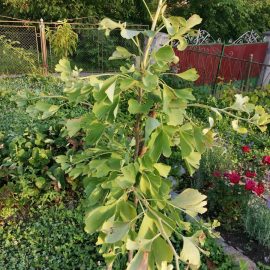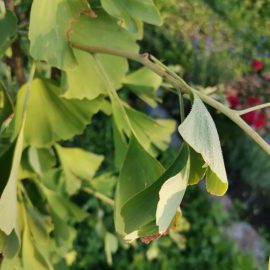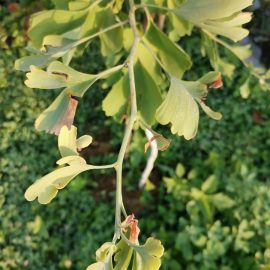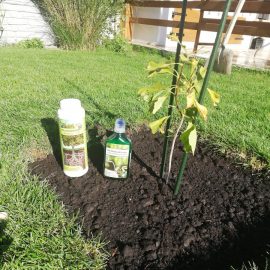Ginkgo Biloba, planting guide and care work
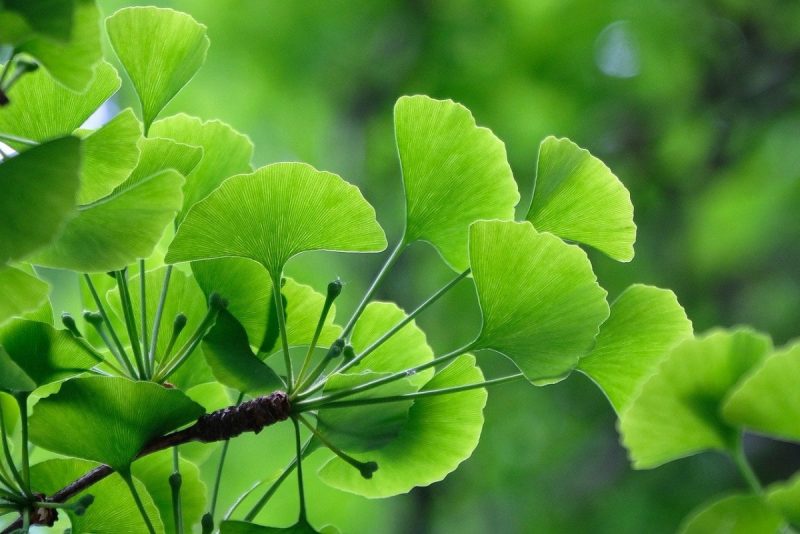
Ginkgo biloba or maidenhair tree is a species that falls, from a systematic point of view, in the group of gymnosperms, making the transition to conifers. It is native to China, where it grows as a size I tree. In some countries, it grows to size II, up to 20-25 m in height. They are dioecious trees. In general, male specimens have a pyramidal crown, and female specimens have a broad crown. The trunk is irregularly whorled. The leaves have a special, fan-shaped, bilobed shape. They are leathery, fresh green. They are arranged differently on the branches: on the long shoots they have a spiral arrangement, and on the short shoots they are arranged terminally, in bunches. In autumn, they turn golden and then fall from the branches. The female trees form fruits in the shape of false, fleshy drupes, with an unpleasant smell when ripe. They can be planted alone or in groups, like common alley trees. Male trees are usually preferred. They have slow growth in their youth, after which they grow quite fast.
Species and varieties
The species Ginkgo biloba includes several varieties, of which the most common are:
- ‘Pendula’ – it forms an umbrella-shaped crown.
- ‘Fastigiata’ – it forms a narrow, pyramidal crown with straight, upwards-oriented branches.
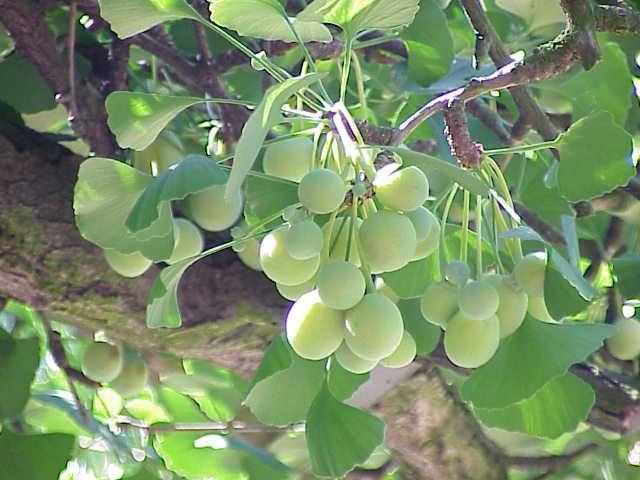
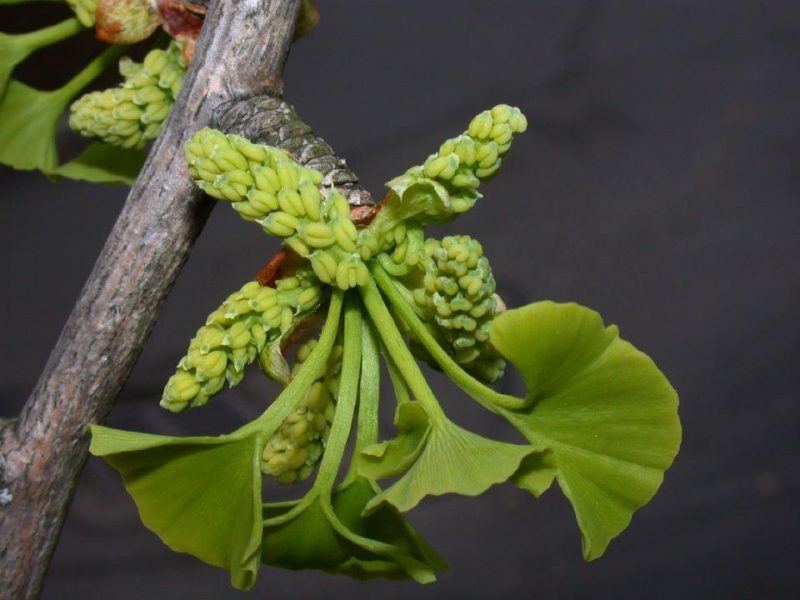
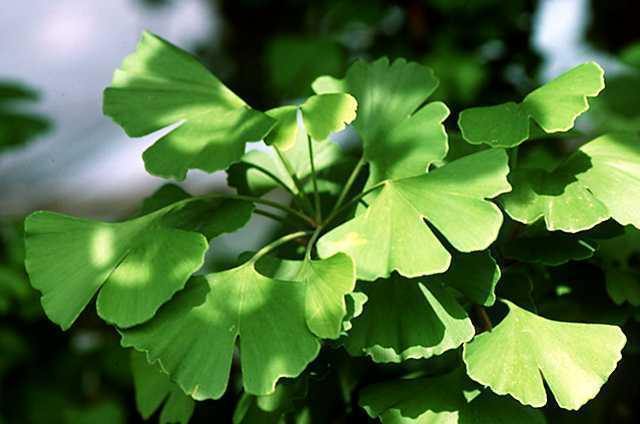
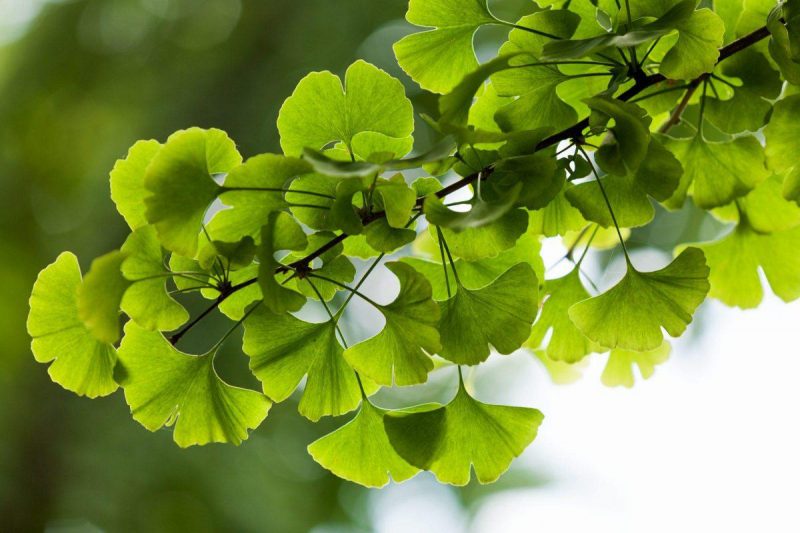
Environmental conditions
Light. They are light-loving trees, but they can also withstand partial shade.
Temperature. It prefers a warmer climate, the young trees being sensitive to frost. Mature trees are more resistant to low temperatures.
Soil. It requires rich and deep soils, permanently moist. It can also withstand more calcareous soils.
Fertilization
In order to stimulate the rich growth of the trees and shrubs, during the vegetative growth period, it is recommended to apply specific fertilizers.
Recommended products
-
You can find products on a different store
Change Store -
You can find products on a different store
Change Store -
You can find products on a different store
Change Store -
You can find products on a different store
Change Store -
You can find products on a different store
Change Store -
You can find products on a different store
Change Store -
You can find products on a different store
Change Store -
You can find products on a different store
Change Store -
You can find products on a different store
Change Store -
You can find products on a different store
Change Store -
You can find products on a different store
Change Store -
You can find products on a different store
Change Store -
You can find products on a different store
Change Store -
You can find products on a different store
Change Store -
You can find products on a different store
Change Store -
You can find products on a different store
Change Store -
You can find products on a different store
Change Store -
You can find products on a different store
Change Store -
You can find products on a different store
Change Store -
You can find products on a different store
Change Store -
You can find products on a different store
Change Store -
You can find products on a different store
Change Store -
You can find products on a different store
Change Store -
You can find products on a different store
Change Store
Planting
Planting is done in spring or autumn, during the vegetative dormancy period, at temperatures above 5° C, if the soil is not frozen and there is no danger of frost. Be sure to purchase planting material from authorized nurseries. Immediately after planting, water abundantly, then keep the soil always moist.
Propagation
Ginkgo trees can be propagated through seeds or grafting.
- the seeds have to be cleaned of the pulp and immediately sown in pots. The plants should be kept in place for 2 years.
- grafting is recommended for the ‘Pendula’ variety.
Recommended products
-
You can find products on a different store
Change Store -
You can find products on a different store
Change Store -
You can find products on a different store
Change Store -
You can find products on a different store
Change Store -
You can find products on a different store
Change Store -
You can find products on a different store
Change Store -
You can find products on a different store
Change Store -
You can find products on a different store
Change Store -
You can find products on a different store
Change Store -
You can find products on a different store
Change Store -
You can find products on a different store
Change Store -
You can find products on a different store
Change Store -
You can find products on a different store
Change Store -
You can find products on a different store
Change Store -
You can find products on a different store
Change Store -
You can find products on a different store
Change Store -
You can find products on a different store
Change Store -
You can find products on a different store
Change Store -
You can find products on a different store
Change Store -
You can find products on a different store
Change Store -
You can find products on a different store
Change Store -
You can find products on a different store
Change Store -
You can find products on a different store
Change Store -
You can find products on a different store
Change Store
In addition:
- Ginkgo trees are sold with bundles of earth around their roots.
- they are resistant to smoke pollution.
- cultivation in groups is a necessary condition for fruiting.














































































































































































































































































































































































































































